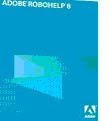The Southwestern Ontario Chapter of the STC presented an Education Evening on Tuesday, September 15th 2010 featuring many of the common applications that technical communicators use at their jobs. The SMEs (Subject Matter Experts) readily answered questions related to the tools, highlighted the relative strengths and weaknesses of these tools, and provided tips and tricks for their use.
The Education Evening was held in "progression" format, where each expert hosted a table, and attendees choose the table based on their level of interest. The attendees switched between the various tables according to the degree of detail desired.
The presenters were:
Feedback received from some of the attendees is below:
Fei Min:
 Advanced MS Word
Advanced MS Word
The coolest thing that I learned is that there is a RefStyle in the field codes. If you create a unique paragraph style, then a template user can type in that paragraph and whatever they type will appear wherever you’ve used the RefStyle field. This makes filling in document information like the author, date and version really easy, and that information can be displayed on every page in the footer. Jessie-Lee and David had plenty of neat tricks to show.
 Adobe Photoshop
Adobe Photoshop
This program has so many cool things that it’s hard to pick just one. I guess my favorite was using Image > Adjustments > Shadows/Highlights to fix a photograph when the lighting was too dark or too bright. It works better than using Brightness/Contrast. Julia demonstrated this on a picture where there was a black lump on a sofa, and with one click on the Shadows/Highlights dialogue, you saw that the black lump was really a dog.
 RoboHelp
RoboHelp
Christine showed me how she is using RoboHelp at work right now, and pointed out what it can and can’t do. Their source files are in HTML, and they use RoboHelp to organize the HTML files into an online help system, with a few special features courtesy of Java scripts. RoboHelp also promotes the re-use of text by supporting shared text with “snippets”, conditional text and variables.
Sam:
 Robohelp
Robohelp
I was amazed to see that Robohelp has progressed so much since the time I last worked on it, which was about 5 years ago. It is much more user-friendly, and comes with a lot more functionalities. Christine demonstrated the various ways Robohelp can be manipulated to produce awesome documents, which was really great!! I look forward to working with Robohelp again very soon.
Although I never had a chance to work with Adobe Illustrator before, going forward I would definitely love to work with this particular tool. The features and functionalities are a great help for any writer in the business of creating user friendly documents. Never knew that a picture can be broken down and manipulated in so many ways to suit the end user’s needs. Really awesome!!
Debbie:
I don't know quite what I expected from the Tools progression, but it provided everything I wanted and more. I attended the Adobe Acrobat, Advanced Word, and Illustrator sessions.
 The Adobe Acrobat session was an eye-opener. Most of my exposure to the product was for creating PDFs. Little did I know that there were so many other functions that I had never even explored. I watched as presenter, Shannon Lerner, walked through the process of having multiple authors provide feedback on one document. She also demonstrated the steps to creating forms. While I have seen forms created in other applications, I have never seen it done in Acrobat.
The Adobe Acrobat session was an eye-opener. Most of my exposure to the product was for creating PDFs. Little did I know that there were so many other functions that I had never even explored. I watched as presenter, Shannon Lerner, walked through the process of having multiple authors provide feedback on one document. She also demonstrated the steps to creating forms. While I have seen forms created in other applications, I have never seen it done in Acrobat. Illustrator and Photoshop are not applications that I use every day. In fact, they are applications that I would love to use. Presenter Julia Oulette showed me why my interest is justified. While my focus has always been on Photoshop, it was great to see what Illustrator can do. I could immediately see how it could be extremely useful for technical communication. While I am used to looking at a picture as a whole, I have a new found interest in vectors and what you can do once a picture is broken into parts.
Illustrator and Photoshop are not applications that I use every day. In fact, they are applications that I would love to use. Presenter Julia Oulette showed me why my interest is justified. While my focus has always been on Photoshop, it was great to see what Illustrator can do. I could immediately see how it could be extremely useful for technical communication. While I am used to looking at a picture as a whole, I have a new found interest in vectors and what you can do once a picture is broken into parts.Overall, the Technical Communication Tools Education Evening was definitely an eye opener about the various tools that are used in producing high quality user friendly help guides and documents. For more information about the Education Evening, please visit http://stc-soc.org/calendar/Sept13Bios.php






If you'd like to learn more about java technology visit our Geek's Guide on Java training.
ReplyDeleteThere you'll find recorded webcasts, videos, white papers, and free tools that can teach you
all you need to know about this cool and often overlooked technology...
java training